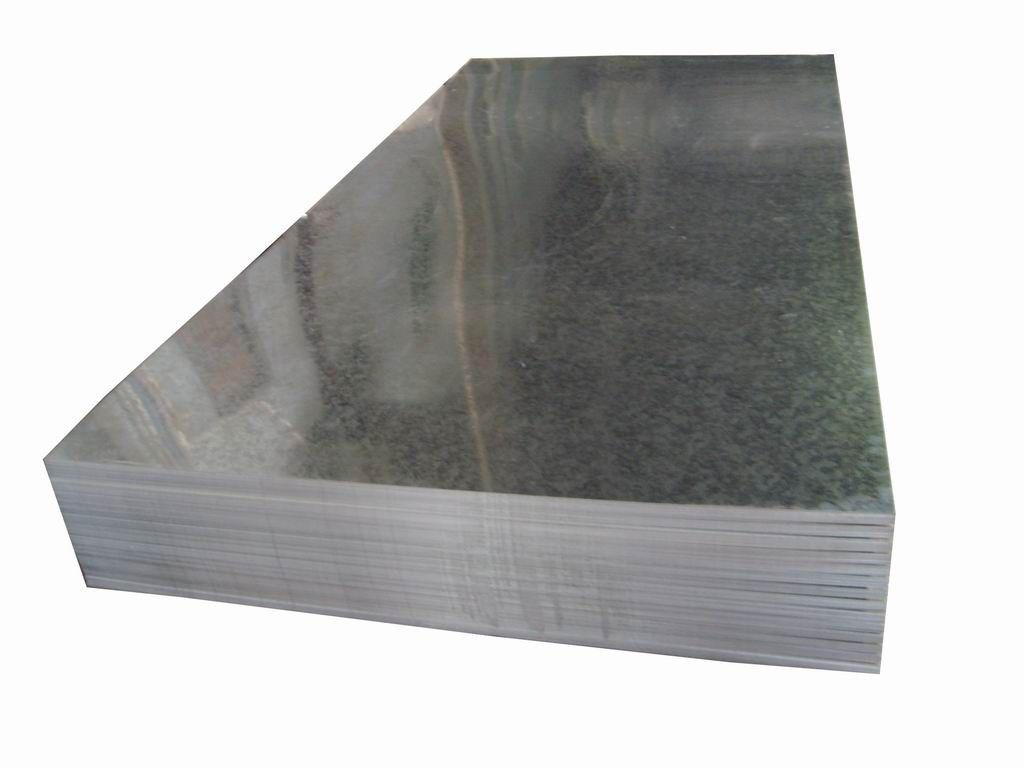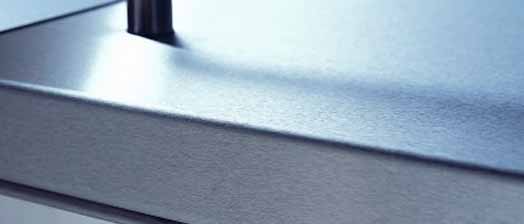Think fast! What’s the difference between galvanized and galvanneal steel? (No googling!) Let’s be honest – unless you’re intimately familiar with doors you have no idea. In fact, I vaguely remember being chastised by one of our resident AHCs for using these terms interchangeably when I first joined the team. That was a fast lesson learned for me, but it isn’t common knowledge until you’re in a position to notice the distinct difference in the two and/or someone points out that they are not, in fact, interchangeable terms. Before determining which to specify and where, it’s crucial to know exactly what the terms are and how they will affect the finished product.
Galvanized Steel
 Galvanized steel is essentially pure zinc, with a very small percentage of aluminum. The aluminum is added to improve the adhesion between the coating and the steel substrate during formation. This is achieved through a multi-step process where a steel sheet is immersed in pure molten zinc at a very high temperature, bonding the zinc to the steel. The zinc offers a galvanic protection to the steel when it is exposed to a corrosive environment – which means, the zinc provides three types of protection to the base steel. [1]
Galvanized steel is essentially pure zinc, with a very small percentage of aluminum. The aluminum is added to improve the adhesion between the coating and the steel substrate during formation. This is achieved through a multi-step process where a steel sheet is immersed in pure molten zinc at a very high temperature, bonding the zinc to the steel. The zinc offers a galvanic protection to the steel when it is exposed to a corrosive environment – which means, the zinc provides three types of protection to the base steel. [1]
Galvanneal Steel
 Galvanneal steel includes the process of galvanizing with an added step – after the zinc coating, the steel is heated to around 1050° Fahrenheit. This process of extreme heating draws more of the iron out of the steel and causes it to mix with the zinc. The finished product has an alloy coating of approximately 90% zinc and 10% iron. These processes effectively provide additional strength, scratch resistance, allows for easier painting, and improved coating adhesion.[1]
Galvanneal steel includes the process of galvanizing with an added step – after the zinc coating, the steel is heated to around 1050° Fahrenheit. This process of extreme heating draws more of the iron out of the steel and causes it to mix with the zinc. The finished product has an alloy coating of approximately 90% zinc and 10% iron. These processes effectively provide additional strength, scratch resistance, allows for easier painting, and improved coating adhesion.[1]
In the realm of steel doors and frames there are three types of galvanized and galvanneal steel used – A40, A60, and G90. The differences in the three are based on the percentage of galvanneal coating per square foot and the protection they offer. A60 is said to be the best for steel doors an frames as it offers 50% more protective coating and protection compared to the A40 coating and is more aesthetically appealing than the G90, which tends to look rough regardless of painting and finishing.
Now it’s your turn, what has been your experience with galvanized/galvanneal in reference to steel doors and frames; have you seen improved performance of one over the other?

My company is intrested in going over to gavanneal. I need some information on this.
What information would you like? Tell us a bit more about your current situation and we’ll see how we can help!
Is there a difference in the two when it comes to welding. When using the two materials unpainted, Galvanneal is less shinny so it is better when in the woods.
Yes Galvannealed is better in welding then Galvanize. Hence mainly used in continuous welding application like pipe for its leak proof requirement.
Between galvanized & galvenealed material, Which one is costly?
Galvanized is more costly because it’s not as popular in our industry. Galvanealed is actually worked into the metal and more effective.
Thanks Whitney!
Got my answer.
how to identify visually galvanised sheet and galvannealed sheet ?
Oops, I just realized I should have posted my reply here. Sorry :/
Hello Arumuga. Galvanneal coatings have no free-zinc present and have a low-lustre matte appearance, versus the metallic sheen of galvanized coatings.
How does it stand up to rust? Thank you
Hi, Heather! Both galvanized and galvaneal steel are built to stand up to rust.
Aluminum is a metal that is rust proof, it has a tenacious oxidation coating, but no rust.
Re: Appearance.. Hello Arumuga. Galvanneal coatings have no free-zinc present and have a low-lustre matte appearance, versus the metallic sheen of galvanized coatings.
i want to do galvanneal in a technical project.I see that zinc coated metal is heated at 1050 degre c.how long we have to heat the metal? what happens if we heat for a long time?
I am trying to locate a vendor to buy 22 panels 1/2″ thick x 4’w x 8’h.
Do you know what vendor can provide these panels?
Best.
I sell galvanzied, there is a need to contact me.Email 422044736@qq.com
Hello, I work with hollow metal doors and frames, our galvanized material is a60. I’ve always argued that our a60 frame material lost its protective zinc coating, once face welded and ground smooth. Is this true? I feel that I can see the slightest color gradation in the metal after we grind the welds down.
On the spot that was worked on. Not the whole frame.
Hello Katie
I am from India. I have just started a new Fabrication unit for steel door and window frame. Please advice.
1.The material I am using is Galvanised steel which goes through powder coating but coating is not coming strong. There is nothing as Galvenneal available but the companies here have launched Skin Pass Galvanised sheet which has a rough surface than normal.
2. Also, I have been using CNC bending press. Would roll forming be a better alternative?
Thanks